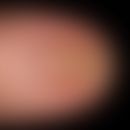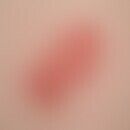Synonym(s)
Curschmann-Steinert Syndrome; Myotonic muscular dystrophy; Steinert Syndrome
HistoryThis section has been translated automatically.
Curschmann, 1905; Batten and Gibb, 1909; Steinert, 1909
DefinitionThis section has been translated automatically.
Autosomal-dominantly inherited disease of the musculature of different expressivity.
You might also be interested in
Occurrence/EpidemiologyThis section has been translated automatically.
Prevalence: 3-6/100.000 inhabitants.
EtiopathogenesisThis section has been translated automatically.
Among others, autosomal-dominantly inherited mutations of the DMPK gene (gene locus: 19q13.2-q13.3) with consecutive disruption of the enzyme "Dystrophia myotonica-protein kinase", an ubiquitously expressed (especially brain, smooth muscles, striated muscles) protein kinase, were described.
ManifestationThis section has been translated automatically.
First manifestations are possible at any age, often in the 3rd decade of life.
ClinicThis section has been translated automatically.
In the foreground are muscle weakness, atrophy of muscle groups and intelligence defects. Often associated with cataract, cardiac arrhythmia, testicular atrophy, bald forehead, fatty tissue atrophies and vasomotor disorders. Dermatologically significant is the correlation with various benign and malignant skin tumours, e.g. trichoblastoma, pigmented basal cell carcinoma.
TherapyThis section has been translated automatically.
Dermatologically relevant is the monitoring and treatment of possible accompanying skin tumors. In the case of ichthyosis and keratotic skin alterations, external skin care and keratolytic preparations are used. S.a.u. Ichthyosis vulgaris, autosomal dominant.
LiteratureThis section has been translated automatically.
- Batten FE, Gibb HP (1909) Myotonia atrophica. Brain (Oxford) 32: 187-205
- Bouadjar B et al (1992) Multiple pilomatrixoma and myotonic dysthrophy. Ann Dermatol Venerol 119: 899-900
- Curschmann H (1905) On partial myotonia under the picture of an occupational neurosis and paralysis. Berliner klin weekday 42: 1175-1185
- Curschmann H (1912) On familial atrophic myotonia. German Z neurology 45: 161-202
- Grigg-Damberger M (2004) Neurologic disorders masquerading as pediatric sleep problems. Pediatr Clin North Am 51: 89-115
- Itin PH et al (2001) Multiple pigmented basalioma of the scalp in a patient with Curschmann-Steinert myotonia dystrophica. Confirmation of a rare symptom Constellation. dermatologist 52: 244-246
- Steinert HHW (1909) Myopathological contributions. I. On the clinical and anatomical picture of myotonic muscle atrophy. Dtsch Z Nervenheilk 37: 58-104
- Stieler W et al (1986) Multiple basal cell carcinomas of Myotonia atrophica Curschmann-Steinert. Dermatologist 37: 226-229
Outgoing links (5)
Basal cell carcinoma pigmented; Cataract; Ichthyosis (overview); Ichthyosis vulgaris; Trichoblastoma;Disclaimer
Please ask your physician for a reliable diagnosis. This website is only meant as a reference.




